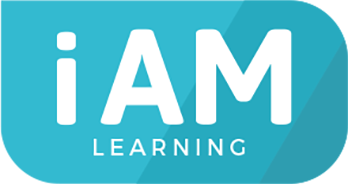.png?width=4000&name=Learning%20Blogs%207%20Ways%20L%26D%20Can%20Fuel%20Business%20Performance%20(Gemma).png)
L&D as a trusted business partner - that’s the ambition you’re encouraged to focus on these days. It’s time to take a seat at the table.
Credibility here you come. Business problems beware.
This is all great; you have a hell of a lot of value to add, and effective L&D is integral to achieving a vast array of business goals. But how do you get there? And once there, firing on all cylinders, learning solutions at the ready, how do you demonstrate real value and stay there?
To help you achieve this goal, here are seven crucial ways L&D can align with, champion and deliver business priorities and performance.
1. Becoming a performance consultant and product-owner
Traditionally, L&D has been seen as the friendly shopkeeper - you receive a training request and create, deliver, and facilitate as required. Increasingly though, the benefits of a little healthy challenge are recognised.
To truly make a difference, you need to delve deeper into the reasons behind this training request - what’s the problem or issue? What data or evidence is available and what does it tell you? Is a learning solution really required or are you looking at a medley (process, communication issue etc.)? Is a different avenue entirely needed instead?
You need to see the business as your customer and foster a collaborative approach focused on consultancy and co-creation. This type of conversation takes practise, especially if it’s a new strategy. It asks for curiosity, patience and a desire to get to the root of the issue on both sides.
But once in full flight, the advantages are numerous: you’re saving the business time and money by putting in the early work to ensure efforts are targeted, and you’re more likely to design a smart, successful initiative. You can also start to build L&D credibility by illustrating interest in, and tangible impact on, your business goals.
2. Upskilling teams for the future
It’s easy to get stuck in a reactive cycle, dealing with day-to-day needs and problems. But L&D is especially valuable when it’s proactive and future-focused.
It’s important that you’re in-sync with where the business wants to go, so that you can plan for instilling the skills, knowledge and behaviours to support. This doesn’t necessarily mean sitting through every board meeting, but it’s definitely an asset to have a channel to the top to understand shifting priorities and aspirations.
If the pandemic’s taught us anything, it’s how vital soft skills such as agility and resilience are to ongoing business success in a VUCA (volatile, uncertain, complex, ambiguous) world. How prepared is your organisation to adapt to future challenges, be they industry, environmental or otherwise?
Whatever the long-term goals are, it’s useful to assess your readiness to meet them, and if you can’t, consider the road ahead with a forward thinking Training Needs Analysis. This will help you identify the skills you have in house and kickstart considerations such as outsourcing, and other opportunities.
3. Creating effective onboarding for new team members
There are several aspects to a great onboarding experience, including integration with the culture and values of the organisation, health and safety training and the all-important tech set-up.
From a business perspective, bringing that individual up to speed as efficiently and effectively as possible is the typical priority. Because the sooner they’re an engaged, contributing member of the organisation, the better (for them, the team and the business).
This doesn’t mean a rushed process though, just a smart one. All components should stem from your goal and work together effectively. As with most things that deliver, this starts with planning. What is it essential for them to know or be able to do and within what timeframe? What resources support this? How can you ensure access to these documents/people/systems is quick and easy at the time of need?
Understanding business objectives is also key. Everyone, in every role, is part of the success journey, so how can you help enable this individual to hit the ground running and understand the value of their efforts from the very beginning? Your L&D team is integral here.
Making sure your employees are connected to the golden thread, to the part they have to play, and why it matters, will drive your business performance.
4. Developing cross-departmental collaboration
No matter the size and scale of your L&D team, playing nicely with others (also known as stakeholder management) carries a whole host of benefits. Not to mention (you’ve guessed it) the benefits to your business.
If you’re aware of (even at a high-level) the challenges, priorities and the data available across HR, Finance, Operations etc. you can intelligently inform your learning strategy and solutions. This information can help with stakeholder buy-in; from building quality relationships to providing comprehensive business-wide initiatives. It can get you close to your end users, including the barriers they face (access, time, support etc.) and engagement trends. It can also allow you to share stories, experience, perspective, skills and resources and escape the echo chamber.
If L&D is going to champion business performance, you need to get out there and take the time to understand the landscape: the pain points, the unique environments and (potentially) operating models. Even in a small company, differences between departments can impact what constitutes effective problem solving, effective campaigning, and beyond.
As extensive and overwhelming as this might sound, it’s really all about having good quality conversations, being inquisitive and opening up avenues to connect. It’s also worth scrubbing up on your influencing and negotiating skills. Seriously, the homework pays off.
If you work in silo, making assumptions and applying blanket solutions, you’re missing out on a trick to provide considerable value across the board.
5. Investing in your continual professional development
That’s right, a regular chunk of ‘you’ time. In an ideal world, your performance management, career progression and training needs are taken seriously and supported (we really hope so) by your organisation. But even if they’re not (time for a new job?), there’s one person who should always be there to cheerlead, and that’s you.
Investing in yourself is the gift that keeps on giving. Tending to your own development is vital on a personal level - it keeps you current, curious, challenged and future-focused - you learn and evolve with the times and shifting needs.
All of that wonderful stuff is naturally good for the business too, be it your exemplary leadership skills which inspire and motivate others, your detailed User Experience (UX) knowledge of creating accessible and engaging eLearning, or leveraging the latest technology to enable an effective solution to a problem. Learning is a chain reaction.
Yes, it’s important to evaluate and improve your initiatives, your approaches and metrics, but it starts with you. And if you’re not empowered with the right skills, knowledge and behaviours, it’s time to look at your options, whether self-directed, internal or otherwise.
If you want to step up your business impact game, is it time to seek out a mentor, turn that Training Needs Analysis on L&D, and scrub up on your business case writing?
6. Empowering others to succeed
Having your oxygen mask firmly in place (yes, this is pretty tenuous but we’re talking about securing your own development plan) puts you in a great position to drive the development of others. If you get behind the 70:20:10 model, then you might already realise that this goes far beyond classroom-based teaching.
Our ability to informally share knowledge, coach, mentor and delegate is more important to business performance than ever before. We’re realising the value of experience, experimentation and reflection (70%), and social and collaborative learning (20%). Formal, ‘pushed’ learning alone (10%) is simply not going to cut the mustard. Learning is breaking out of the classroom and into the flow of work.
Even if you weren’t necessarily a trainer before, you can be a facilitator now. We all have a role to play in how people develop (and not just those we manage).
Learning transfer is most effective when you close the gap between training and real-life application - so it’s important that you isolate live, work-day opportunities where you can involve others in the action.
The results of this as best practice? Less time away from the job for ‘training’, more efficient and effective upskilling, and addressing the threat of single points of failure (having only one person who knows something/how something works etc.), to name but a few.
All great for business performance - a team of individuals learning at the point of need, disseminating know-how, practising and preaching a growth mindset.
7. Contributing to a learning culture
Especially in competitive markets, businesses need to stay curious and ahead of the curve in order to retain their market share, let alone expand. We’ve talked about L&D’s value in upskilling for the future, priming individuals for the next frontier, but you can deliver a lot more than this - you can help project and encourage a learning culture.
This is about developing a growth mindset; embracing failures as stepping stones on the road to success, accepting that different perspectives, experiences and bold ideas stimulate growth, and cultivating enthusiastic learners.
You can support this vision by creating safe opportunities for individuals to practise, fail and try again. You can tell stories about the times you got it wrong and what you learnt from them. You can isolate moments to step aside so that someone else can step up and learn. And you can design learning solutions tailored to the end user and signpost and curate great content which lives outside (not just inside) your organisation.
Effective learning transfer relies on a continuous cycle - so are you planning beyond the event and illuminating opportunities for application and reinforcement? Businesses with successful learning cultures experience higher employee engagement, productivity and retention because they prioritise relevant investment in their people.
How to implement your L&D strategy to achieve your business goals
So how do you kick-off momentum using those seven actions your L&D team need to take to improve your business performance?
- Find out what your organisation’s objectives are.
- Pin down where they want to go, then think about how L&D can support, collaborate and accelerate.
- Ensure that your learning plan and strategy orbit these goals with clear action plans to achieve them.
- When it comes to making a business case, talk the talk; use the language of your stakeholders to pitch and evidence (return on investment, revenue, key performance indicators etc.)
By putting in the work to demonstrate the value of L&D that connects to your business priorities, you will gradually earn the trust and credibility you deserve. Now’s the time to put L&D firmly on the map.
Ready to take your seat at the table? Get in touch with Gemma if you’d like to chat through your L&D strategy and how you can put these ideas into practice in your business.

